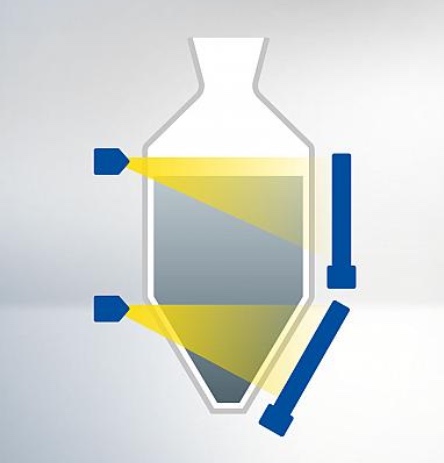May-2025
Rethinking thermal management: The case for the integrated thermal loop
The industrial landscape is undergoing a profound transformation. Increasing manufacturing complexity, stringent regulatory standards, and escalating sustainability demands are compelling industries to rethink how they manage thermal processes.
Watlow
Viewed : 132
Article Summary
Traditional systems, where heaters, controllers, sensors, and power units do not operate in full synergy, are no longer sufficient to meet these challenges. Enter the Integrated Thermal Loop: a data-driven, unified approach that redefines thermal management.
This transformative system integrates all key thermal components and system data into a cohesive ecosystem, enabling real-time feedback, enhanced precision, and actionable insights. Unlike traditional setups, where elements are not fully integrated, the concept of an Integrated Thermal Loop creates a seamless synergy, unlocking new levels of efficiency and control. It isn’t just an innovation; it’s an essential framework for meeting the demands of modern industry while laying the groundwork for future advancements.
The adoption of such systems is not just about keeping pace with technology. It’s about future-proofing operations, ensuring compliance with increasingly strict regulations, and contributing to global sustainability goals. This holistic approach addresses the complexities of today’s manufacturing environments and prepares industries for a connected, data-driven future.
Integration, analytics, and predictive maintenance: a new era of control
In industries such as aerospace, automotive, pharmaceuticals, semiconductor, oil & gas and energy, thermal processes are critical to achieving operational excellence. Yet, inefficiencies, inconsistent performance, process drift, and unplanned downtime often hinder productivity and drive up costs. In highly regulated industries, these issues are exacerbated by the need to comply with rigorous standards like AMS2750, CQI-9, and ISO 20431:2023, which require detailed process documentation and precise temperature control.
The Integrated Thermal Loop addresses these challenges by combining sensors, controllers, and power systems with robust data analytics and predictive maintenance capabilities. One example is Watlow’s THERMALWATCH™ system, which leverages IoT-enabled gateways to collect and analyse data from thermal systems and adjacent subsystems. By identifying early warning signs like sensor drift, insulation degradation, or control instability, predictive maintenance can occur to minimise unplanned downtime, reduce the risk of scrap or poor quality products, and extend the thermal equipment lifespan.
Consider a semiconductor manufacturing facility as a case in point: While the primary challenge for this manufacturer was frequent downtime every two weeks, the root cause was identified through detailed thermal system analysis. By collecting and analysing data, the team discovered multiple cold spots along the exhaust lines, which led to condensation of process gases and, ultimately, clogged lines. Operators would only detect the issue when a pressure spike occurred at the vacuum pump - at which point downtime was unavoidable. Leveraging data insights and thermal loop expertise through the THERMALWATCH solution, the system was optimised by introducing additional control zones to eliminate cold spots. This refinement significantly reduced clogging, extended the preventive maintenance cycle, and ensured a more stable manufacturing process. The result meant that the facility extended its maintenance intervals from two weeks to 26 weeks. This change not only saved millions of dollars annually but also ensured continuous operation in an industry where downtime can cost up to $16,000 per minute.
Take another example of a process that is running well. After carrying out planned maintenance, although the process temperature remains constant, the percent power increases by 20% when the system comes back online. Something has changed! The legacy thermal loop cannot ‘see’ this change because it is just trying to maintain a temperature set point, and that set point is still being achieved. Maybe the insulation had not been put back on or was not installed correctly. The result of such undetected mistakes would mean higher energy consumption, possible safety issues, reduced heater reliability, unplanned downtime and potential additional replacement equipment costs. By collecting and understanding more data from across the entire integrated thermal loop, we can understand the cause of the process drift, flag where the issue lies, and take corrective action.
Another example is a combined temperature and power controller with a two-zone ceramic pedestal, such as the Watlow POWERGLIDE™ controller, used in semiconductor manufacturing. Such systems operate differently than traditional controls. While these are technically ‘closed loop’ systems, they can only see one temperature sensor point in the center of the pedestal. If the two element temperatures are also not kept close to each other, this can cause nonuniformity, resulting in poor chip yield on the wafer. Furthermore, the variance in actual temperature between the center of the pedestal to the edge can result in the pedestal cracking, causing very expensive downtime and replacement costs. Systems such as POWERGLIDE integrate the actual heating element temperature measurements individually and turn the power up and down to keep them balanced, thereby increasing overall thermal uniformity and reliability.
Driving efficiency and sustainability through analytics
A cornerstone of the Integrated Thermal Loop is its use of advanced analytics to optimise energy consumption, increase operational efficiency, and reduce costs. Systems like EPower advanced SCR controllers employ hybrid firing modes and predictive load management to achieve power factors above 0.9 while addressing variations in load impedance. These technologies lead to significant energy savings, often exceeding 10%, while reducing greenhouse gas emissions.
Analytics also play a crucial role in improving yield and product consistency. By monitoring variables such as temperature fluctuations, energy inputs, and equipment performance, the Integrated Thermal Loop minimises variability and enhances process reliability. This ensures compliance with regulatory requirements while delivering higher-quality products with fewer defects.
Sustainability is another key driver. The modular nature of these systems allows manufacturers to adopt solutions incrementally, facilitating a smooth transition to more energy-efficient operations. This incremental approach not only reduces initial costs but also ensures compatibility with existing infrastructure, making it a practical choice for industries striving to meet decarbonisation goals.
Add your rating:
Current Rating: 1

















